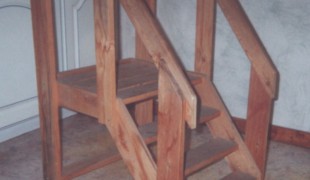- 9078
- 608
- 18
- 14
- 0
- Help Ukraine
About the solution
Family Veeh has always made a lot of music at home, either with violin, cello or harmonium. They quickly observed that their son Andreas, who was born with Down Syndrome, shared this passion for music. But due to his condition, it seemed impossible that Andreas would be able to make music on his own, at least with existing instruments. Hence, his father invented the Veeh-Harve, a stringed instrument suited to the Andreas’ abilities.
Inspired by old stringed instruments with templates for sheet music, Hermann invented a totally new instrument that can be played without knowledge of notes. He created an easy and clear notation especially suited to this instrument. The templates for the sheet music are positioned between the resonance body and the strings so that the notation is made tangible.
It took five years and numerous prototypes until Hermann launched the instrument in 1992. The Veeh-Harfe is made of valuable tone wood and the space between the strings is larger compared to other instruments.
“The Veeh-Harfe opens up a completely new world to Andreas and other people. The dream of making music with people with different skills and talents has become reality”, is stated on the official website.
The innovation enables children the first contact to music instruments, is used for music pedagogy as well as in clinics and enriches the everyday life in retirement homes.
Adapted from: http://www.veeh-harfe.de/
What about you? We are curious to read about your innovation on the website.
https://youtu.be/rRDDwKNpG4Q
这些解决方案不应包括使用药物,化学品或生物制品(包括食品);创伤性设备;冒犯性的,商业或内在危险的内容。该解决方案未经医学验证。请谨慎进行!如果您有任何疑问,请咨询健康专家。
DISCLAIMER: This story was written by someone who is not the author of the solution, therefore please be advised that, although it was written with the utmost respect for the innovation and the innovator, there can be some incorrect statements. If you find any errors please contact the patient Innovation team via info@patient-innovation.com
-
-
410
-
0
-
6650

The Haberman Feeder- a mum's invention
VENTILATION
(SELF)-CARE: DRINKING: Drinking independently.
CAREGIVING
SWALLOWING: Swalling food and liquids
Down Syndrome (Trisomy 21)
Assistive Daily Life Device (to help ADL)
Promoting self-management
Enhancing digestive function
Support on Puerperium/Post-childbirth
Caregiving Support
Gastroenterology
General and Family Medicine
Medical Genetics
Pediatrics
Physical Medicine and Rehabilitation
United Kingdom
-
-
-
473
-
0
-
6878

Man builds sink stand for his nephew
-
-
-
968
-
0
-
21014

跟踪自闭症儿童的系统
CAREGIVING
COMMUNICATION: Communicating, whether by speaking, listening, or other means
Social interaction
Autism
Assistive Daily Life Device (to help ADL)
Body-Worn solutions (Clothing, accessories, shoes, sensors...)
App (Including when connected with wearable)
Anxiety
Difficulty concentrating or making decisions
Social withdrawal or isolation
Restlessness or feeling slowed down
Loss of interest or pleasure in activities (anhedonia)
Promoting self-management
Managing Neurological Disorders
Preventing (Vaccination, Protection, Falls, Research/Mapping)
Caregiving Support
Child and Adolescent Psychiatry
Medical Genetics
Neurology
Pediatrics
Psychiatry
Israel
-
 zh
zh